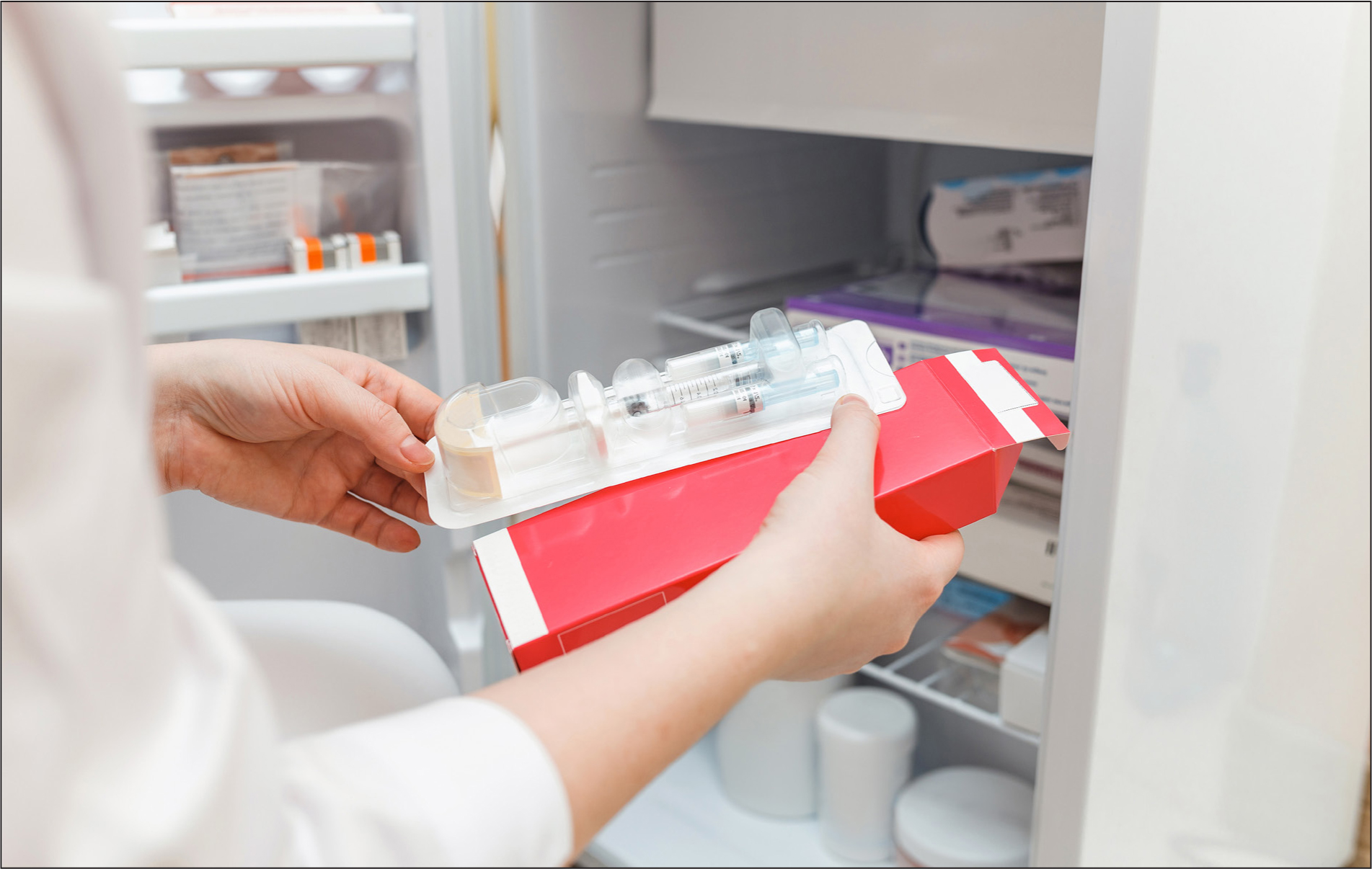The importance of having an effectively vaccinated population has been brought into stark relief in recent years by the COVID-19 pandemic and the increase in cases of childhood diseases, such as measles and whooping cough. Every vaccine counts—from a financial as well as a public health perspective—so it is vital that none are wasted. The way we store vaccines (and other temperature sensitive medicines) is critical to ensuring that they work effectively and keep our communities safe.
These products are considered part of the ‘cold chain’, which means that they must be kept in stable refrigerated conditions at temperatures between 2°C and 8°C, from the point of manufacture until they are administered to the patient. Storing cold chain medicines outside this temperature range can make them less effective.
Vaccines in particular contain live organisms from viruses and bacteria, which gradually biodegrade over time. A temperature too high or too low can irreversibly speed up their natural loss of potency, rendering manufacturer ‘use by’ dates useless. The vaccine might then fail to create the desired immune response, putting patients and the wider community at risk.
Storing cold chain medical products: responsibilities
Stringent storage procedures form a central plank of guidance issued by the Royal College of Nursing (RCN) and health bodies including the Care Quality Commission (CQC) and Public Health England, and they are based on the NHS green book.
It states that, in organisations such as GP surgeries or community health service providers, at least two individuals must be nominated-one from the nursing team and one from administration/management—to take responsibility for the order, receipt and care of vaccines, including storage, to maintain the cold chain at all times. Monitoring refrigerator temperatures is an integral part of these responsibilities. They must:
- Monitor the fridge temperature at least once a day
- Take an additional reading using a second thermometer, independent to the integral thermometer in the vaccine fridge, to cross-check accuracy
- Make clear records of current, maximum and minimum temperature readings
- Reset the thermometer after each reading
- Take immediate action if the temperature falls outside 2⁰C and 8⁰C.
The guidance allows for named staff to delegate the fridge temperature monitoring to other colleagues, provided they understand all aspects of the process. However, in the context of a busy community health setting, particularly at peak immunisation times and when some staff may already feel under pressure, this essential monitoring and recording task can seem onerous and might slip down the priority list. The RCN has acknowledged that safe storage ‘may be perceived as a tedious area’ (Chiodini, 2013) in its continuing professional development document on the safe storage and handling of vaccines. It also stresses the absolute need to adhere to best practice, citing incidents where storing vaccines outside the recommended temperature range resulted in 560 patients from two practices had to be recalled for repeat vaccination (NPSA, 2010). All staff must play their part in complying with best practice, but a medical fridge can play a valuable role in easing that burden.
Benefits of a medical fridge
Guidance on the type of fridge used to store vaccines and other temperature-sensitive medicines is unequivocal; a validated medical fridge is the only option. A domestic fridge is completely unsuitable for the task.
Ease of use
Advanced medical refrigerators use smart technology to enable contactless temperature readings. Reports can be downloaded directly to a phone or tablet and shared with approved personnel directly, via an app. Eliminating the need for manual temperature recording frees staff time up to carry out more front-line work. It also removes the risk of human error.
Accuracy
Lec Medical developed dual air and load probes to deliver pinpoint temperature measurement and to ensure that vaccines are stored at optimum temperatures. The first probe monitors the internal temperature of the fridge, while a second sits within a silicon oil, formulated to mimic a vaccine. It means the temperature of the vaccine is monitored – not just the fridge temperature.

Safety assured
Medical fridges provide a range of important safeguards. A power failure alarm with 48-hour battery back-up ensures monitoring data is retained. Should an outage occur, or if or a fridge door is left open too long, the data will show whether the temperature of actual vaccines has fallen outside the recommended temperature range at any point. This means practice leaders can make informed, data-driven decisions on medical products stored in the fridge, potentially avoiding the need to dispose of them in the event of a crisis.
An intelligent fan management system prevents warm air being drawn in when the fridge door is open and automatically restarts when it closes, ensuring temperature stability. Fridge doors also have the option of a glass frontage and have both manual or digital locks, ensuring only authorised personnel can access them, and providing security for any controlled drugs stored inside.
How can you help?
Every member of the community nursing team can play their part in ensuring vaccines and medicines are safely stored.
- Never use a medical fridge for anything that could present a contamination risk, such as packed lunches or milk.
- Do not leave the fridge door open for longer than is absolutely necessary
- Make sure it is filled to no more than 75% capacity at any time, to allow adequate air circulation
- Organise stock stored according to first expiry
- Keep the fridge clean and serviced regularly, according to the manufacturer's instructions.
Maintaining the highest possible standards of patient safety is at the core of community nursing. A medical refrigerator, and the collective will to use it well, will ensure that healthcare professionals meet the high standards demanded by both the CQC and themselves.


